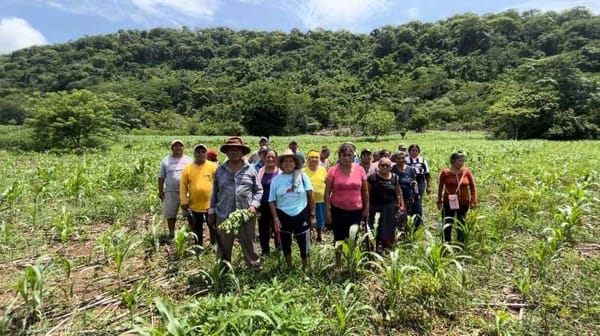An area of Mexico has some conditions similar to those on Mars
In Cuatro Cienegas Coahuila, sedimentary structures of organisms resistant to extreme environments would develop in an environment similar to that of Mars.

The sedimentary structures of organisms resistant to extreme environments found in the Cuatro Cienegas Coahuila (CCC) pools would develop in an environment similar to that found on Mars.
The so-called stromatolites, with a stone appearance, are formed and developed by the activity of microbial populations, which are found in the pools or springs of Cuatro Cienegas. These are sites that are poor in nutrients (as is expected on Mars) and rich in minerals similar to those on the red planet.
One of the most relevant investigations on the subject is that of the evolutionary ecologist from the National Autonomous University of Mexico (UNAM), Valeria Souza, who has carried out studies on the genome of the bacterial communities that can subsist with scarce nutrients in the wells of Cuatro Ciénegas.
For Souza Saldivar and her team, the characteristics of the wetlands at CCC are a suitable terrestrial model for what might be sought on Mars. There are almost 300 pools, some lagoons, and rivers in the wetlands here. For this reason, they refer to CCC as a natural laboratory for astrobiology, because a primitive environment with similar Martian conditions can be studied there.
In the words of Paola Molina Sevilla, an Earth science teacher, a "Martian analog (is) a site on Earth whose environmental conditions, geological characteristics, biological attributes or a combination of these, approximate in some way to those expected or observed on Mars.
The study of Martian analog environments on Earth allows the simulation of experiments and missions that would later be executed at the target site and would serve as a basis for solving the unknowns of the red planet.
The difficulties that arise in these environments can be resolved more practically here, than at 225 million kilometers away (average separation between the third and fourth planets of the solar system according to NASA).
Both in Cuatro Cienegas and in the Gale Crater, where the robot Curiosity explores the red planet, gypsum was formed by the action of fire underwater. Souza Saldivar, a Mexican scientist who has worked with NASA studying bacterial communities, stresses the importance of preserving CCC.
Because if there is life on Mars or other planets, and that life persists today, the study of life in ancient sites with scarce nutrients can indicate what to look for and how to interpret that data. On the other hand, Molina Sevilla also warns that there are processes on the surface of Mars for which there is no analogy with those on Earth.
"Not all current analogs are appropriate for all the tests that are carried out in preparation for a mission".
According to a classification by Jeffrey Marlow (2008), there are Chemical Analogues, referring to soil composition, and Martian regoliths, such as pH or mineralogical composition. Mechanical, about the force, cohesion, and friction on the surface (useful for the development of robots and design of their tires).
Physical analogs concerning soil size, density, porosity, or water content (to know the past and present of water-soil interaction, or how it would react to an astronaut's suit). Magnetic, to understand susceptibility and magnetic saturation. Organic Analogous Environments, to provide data on soil sterility (useful to detect the life or traces of molecules of biological interest).
Another analogous Martian environment that stands out on Earth is the Atacama Desert in Chile, a hyper-arid site that extends more than 200,000 kilometers from the border with Peru in northern Chile to Copiapó. A sterile place where it is suggested that the aridest zone has remained so for more than ten to fifteen million years; according to Rafael Navarro-González, the doctor in Astrobiology.
So are the Mojave Desert and the Panoche Plain, both in California; the Dry Valleys of Antarctica; the Tinto River and the Jaroso Hydrothermal System, both in Spain; the La Joya Desert in Arequipa, Peru; Saltem Skov in Denmark; and basalt from the Hawaiian Islands; according to Marlow.




